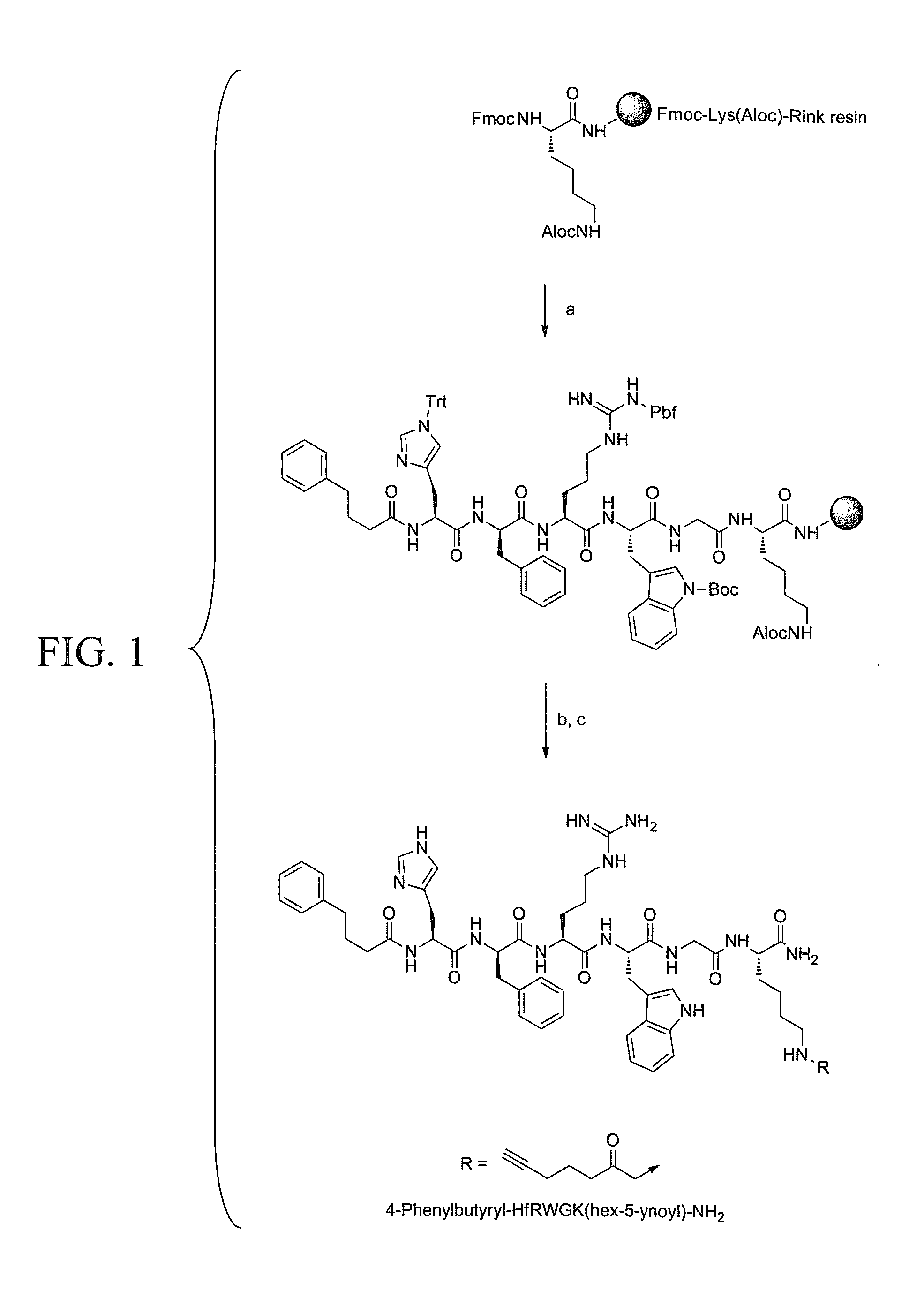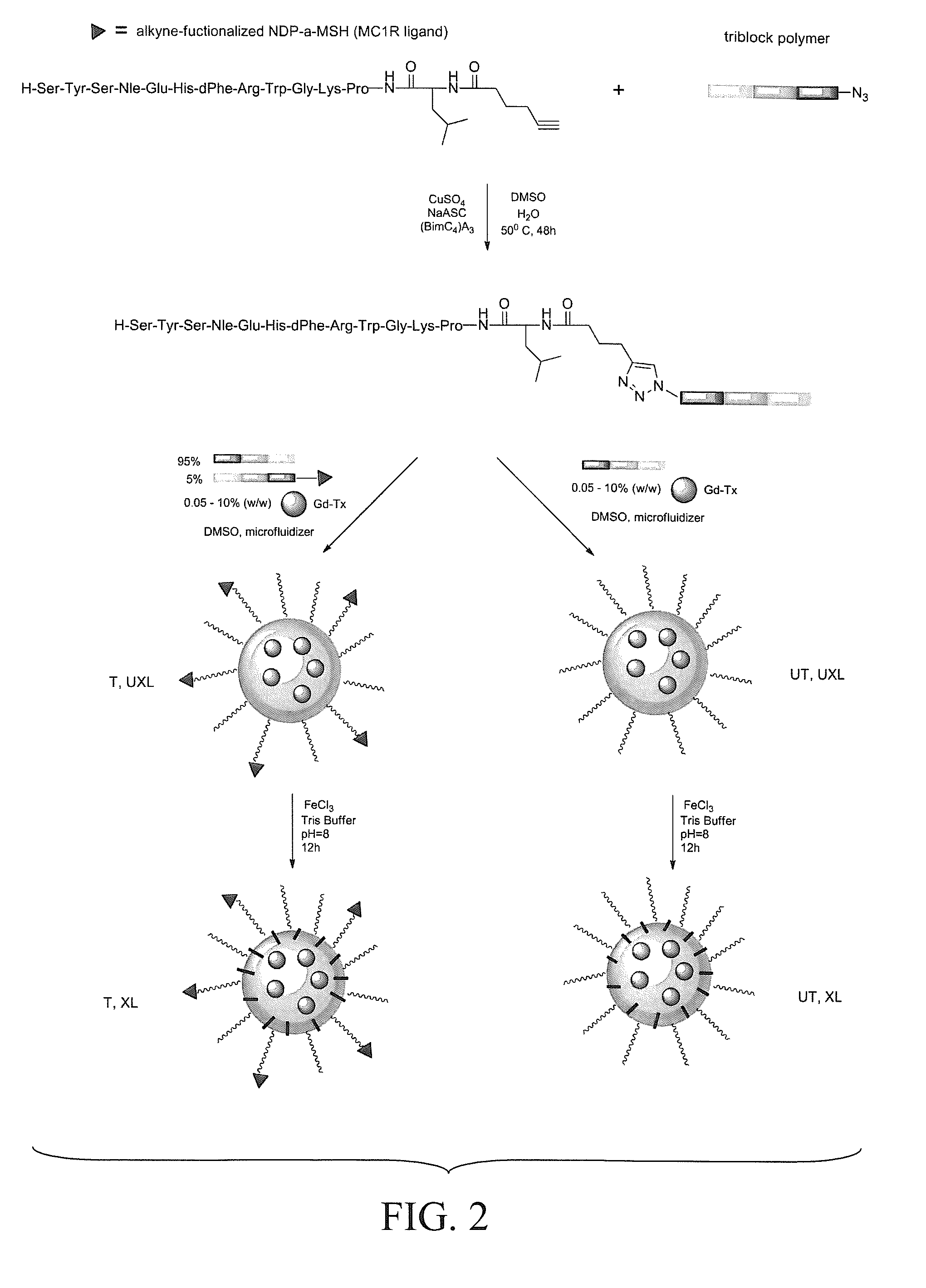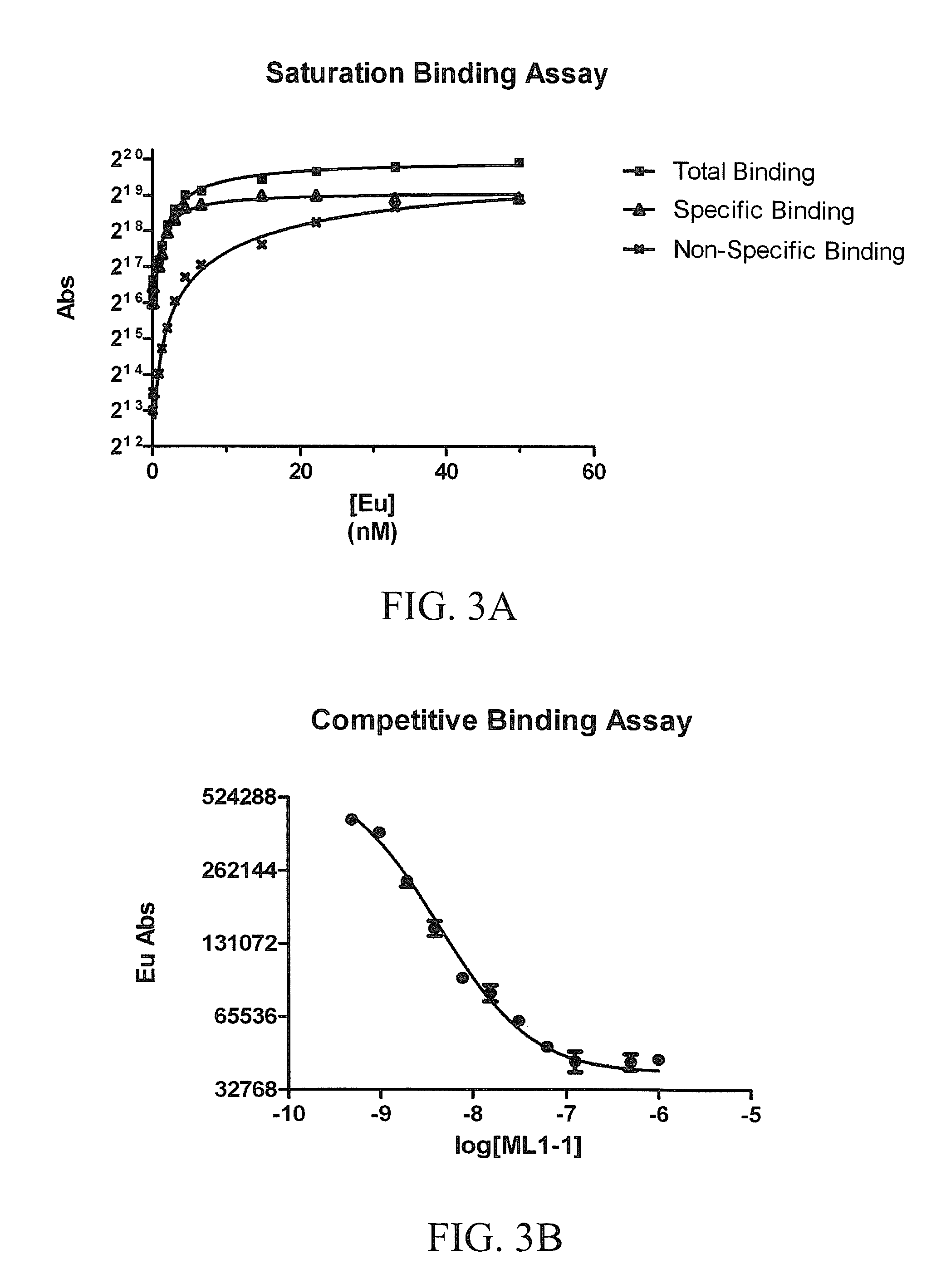Melanocortin 1 receptor ligands and methods of use
a technology of melanocortin and receptor, applied in the direction of peptide/protein ingredients, peptide sources, drug compositions, etc., can solve the problems of many failures and large nanoparticle size, and achieve the effect of inherent system instability
- Summary
- Abstract
- Description
- Claims
- Application Information
AI Technical Summary
Benefits of technology
Problems solved by technology
Method used
Image
Examples
example 1
Preparation of MC1R-Targeted Tri-Block Polymer Micelle
[0239]Historically, ligands which are known to interact with the hMC1R receptor also demonstrate cross-reactivity with other melanocortin receptors, namely hMC4R and hMC5R. While MC1R is known to be expressed almost exclusively in melanoma cells and melanocytes, hMC4R and hMC5R have high expression levels in normal tissues including kidney and brain, thus non-specific ligand binding is not ideal. To combat this problem and minimize off-target effects, several ligands from the literature were examined that have been reported to possess nanomolar binding affinities for hMC1R (Table 3). Ligand 1 was reported to have a high affinity and selectivity for MC1R (1R / 4R selectivity ratio of 1200)[20, 28] and was consequently chosen as a template for the design of the novel ligands 2, 3 and 4. Additionally, ligands 5 and 7 were reported to have moderate hMC1R selectivities over hMC4R and hMC5R[22]; thus, each was functionalized with a termi...
example 2
Development of a Melanoma Targeted Probe for Imaging of Melanocortin Receptor 1 (MC1R)
[0314]Nodal metastases are frequently the initial manifestation of metastatic spread in patients with melanoma and accurate determination of nodal status is important for both prognostic evaluation and treatment planning. The melanocortin 1 receptor (MC1R) is overexpressed in most human melanoma metastases, thus making it a promising target for imaging and therapy of melanomas. In this study, using DNA and tissue microarray, MC1R expression was analyzed in different normal tissues and melanoma samples, confirming the expression of MC1R in a large fraction of patients with melanoma. The inventors had developed a peptidomimetic ligand with high specificity and affinity for MC1R. Here, the inventors have conjugated this ligand to a near-infrared fluorescent dye to generate a MC1R specific optical probe (MC1RL-800, 0.4±0.1 nM Ki). The uptake of the probe was studied in engineered A375 / MC1R cells in vit...
example 3
Development and In vivo Quantitative Magnetic Resonance Imaging of Polymer Micelles Targeted to the Melanoma-Specific Marker MC1R
[0445]Recent emphasis has been placed on the development of rationally-designed polymer-based micelle carriers for theragnostics. In this study, micelles were decorated with a specific ligand for the melanocortin 1 receptor (MC1R), which has been evaluated as a cell-surface marker for melanoma. The inventors describe the synthesis and characterization of a new gadolinium texaphyrin (Gd-Tx) chelate that was encapsulated in an IVECT™ micellar system, stabilized by crosslinking with Fe(III) and targeted to MC1R. The inventors have demonstrated that these stabilized Gd-Tx micelles are able to actively target MC1R expressing xenograft tumors in vitro and in vivo more effectively than control systems, including untargeted and / or uncrosslinked Gd-Tx micelles. Taken in concert, the findings reported herein provide support for the conclusion that appropriately desi...
PUM
| Property | Measurement | Unit |
|---|---|---|
| concentration | aaaaa | aaaaa |
| thickness | aaaaa | aaaaa |
| thick | aaaaa | aaaaa |
Abstract
Description
Claims
Application Information
 Login to View More
Login to View More - R&D
- Intellectual Property
- Life Sciences
- Materials
- Tech Scout
- Unparalleled Data Quality
- Higher Quality Content
- 60% Fewer Hallucinations
Browse by: Latest US Patents, China's latest patents, Technical Efficacy Thesaurus, Application Domain, Technology Topic, Popular Technical Reports.
© 2025 PatSnap. All rights reserved.Legal|Privacy policy|Modern Slavery Act Transparency Statement|Sitemap|About US| Contact US: help@patsnap.com



